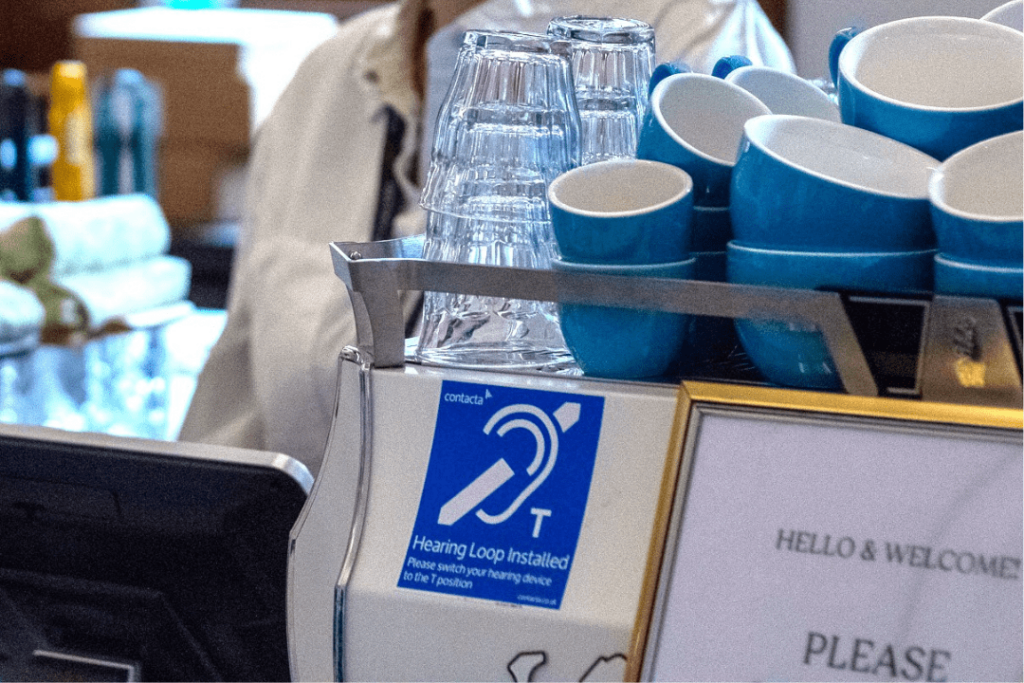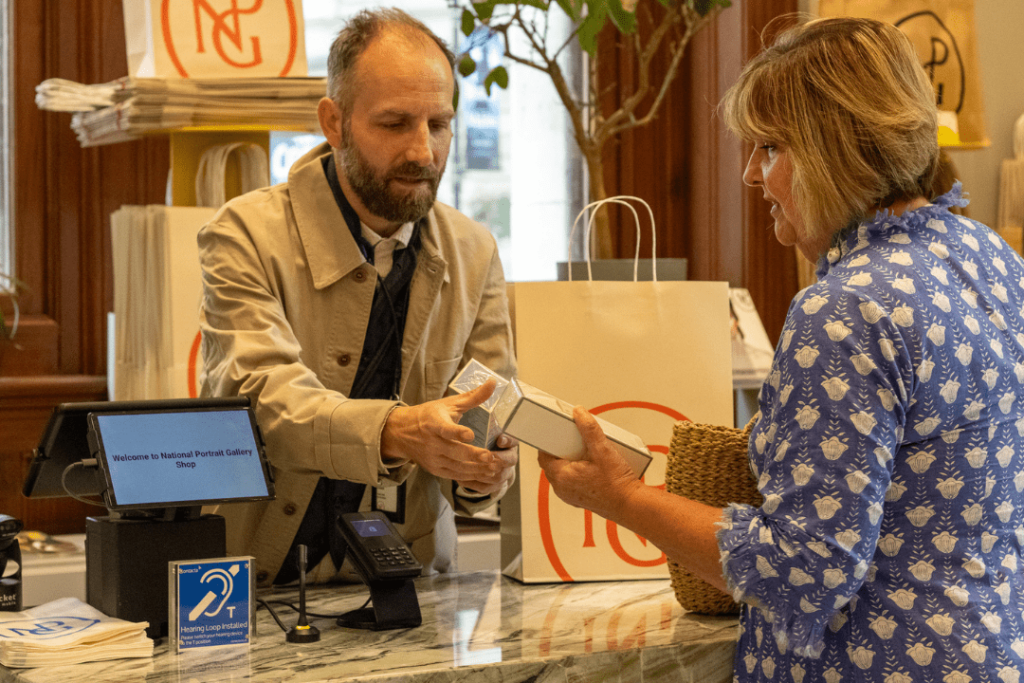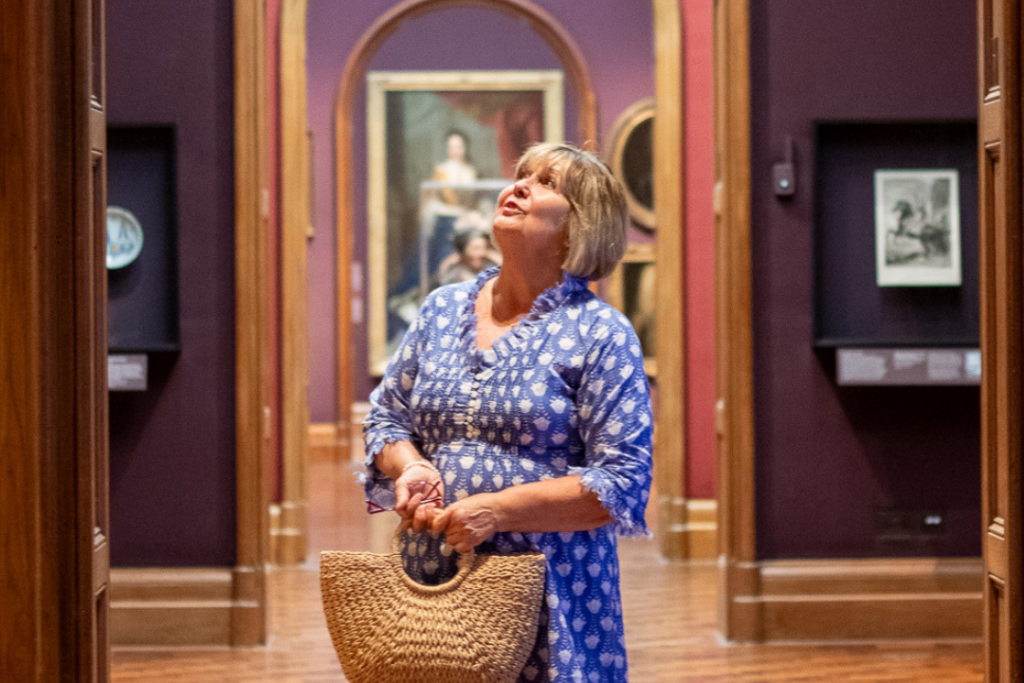
Last year, the National Portrait Gallery contacted us to discuss how their venue could be more welcoming for art lovers with hearing loss.
With the help of one of our corporate partners, Contacta Systems Ltd – a global leader in assistive listening installations – we’ve helped the National Portrait Gallery become more accessible through installing new hearing loop systems.
What is a hearing loop system?
Hearing loops are audio transmitters that can connect to people’s hearing aids. From till points to theatres, they cut out background noise, making listening much easier. We know that some people with hearing loss have had a problem accessing goods and services, and organisations can install hearing loops to decrease that percentage, while complying with equality legislation.
Find out more about hearing loops here.
What we did

The National Portrait Gallery’s Inspiring People project – a three-year redevelopment programme to re-present their collection and create new spaces for the public – was completed in summer 2023. Contacta’s installation of hearing loops was a part of this redevelopment project.
Contacta ran a six-month programme of assessment and installation, which included staff training. Senior Engineer, Stuart Ward, began by carrying out surveys to assess where loops could be most beneficial to visitors. The obvious sites were those where visitors would be talking directly to staff, such as ticket desks and cloakrooms, and these areas were the first to be considered for the hearing loop upgrade.
Leah Romaniello, Visitor Experience Manager at the National Portrait Gallery, says:
“It was a huge priority to make it as accessible as possible. We are a public space and, in order to offer an equal experience to everyone, upgrading our existing loop systems – and adding to them – was very important.”
Leah and Stuart were keen to get first-hand feedback on the loops and invited former RNID trustee, Janine Roebuck, to help. A former mezzo-soprano opera singer, Janine now uses bi-lateral cochlear implants. She says:
“I whole-heartedly applaud the National Portrait Gallery for its its efforts to make the building, and its event, accessible to people with hearing loss,” she said. “It was a privilege to test the loops and an interesting exercise for all of us. I could hear some interference on one of the microphones, which Stuart could then resolve.”
Finding the right hearing loop for your organisation

RNID supports organisations and businesses that seek to improve their accessibility for people who are deaf, have hearing loss and tinnitus.
If your organisation wants to improve your venue for people with hearing loss and is considering a new hearing loop system – or reviewing your current system – we can help. Our partner Contacta has an experienced team that will assess which hearing loop, or other assistive listening system, will work best for your venue. They provide a tailored solution, whether that’s installing a hearing loop in a large conference room or a 1-2-1 loop at a ticket window.
They can advise and support you from the initial concept stage through to installation, making sure the assistive listening system is installed to meet industry standards and your venue’s unique requirements.
Contacta has a network of engineers across the UK and can offer site surveys and installations, annual maintenance and service calls.
RNID receives a 5% donation for every hearing loop system installed and referred to Contacta via our dedicated email address [email protected].